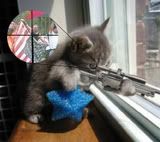J
Jay Idaho
Guest
We are changing.....
We are using both systems in the US. Look around, liters of soda, fasteners on vehicles, specs on many items, all metric (or both). The kitchen (recipes) is still not converting and 100 yards is the length of a football field. Kids are getting comfortable with both systems allowing a gradual adoption of metrics.
One thing that I dislike is C. for temperature. The F. system gives us a better feel for temperature. Ten degrees in C. is a much wider range than ten degrees F. C. is just too course, I think.
Hey, 80 cents a liter for gas might feel better than $3 a gallon!
We are using both systems in the US. Look around, liters of soda, fasteners on vehicles, specs on many items, all metric (or both). The kitchen (recipes) is still not converting and 100 yards is the length of a football field. Kids are getting comfortable with both systems allowing a gradual adoption of metrics.
One thing that I dislike is C. for temperature. The F. system gives us a better feel for temperature. Ten degrees in C. is a much wider range than ten degrees F. C. is just too course, I think.
Hey, 80 cents a liter for gas might feel better than $3 a gallon!


